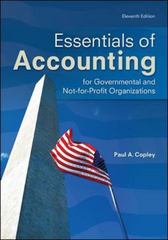Questions 11 and 12 are based on the following statements, which appeared in the intro- duction to a November 2013 IMF Working Paper (WP/13/255), Securitization: Lessons Learned and the Road Ahead," by Miguel Segoviano, Bradley Jones, Peter Lindner, and Johannes Blankenheim: Securitization, like other forms of financial innovation, has costs and benefits associated with it. There are conditions under which securitization can be a net benefit for the financial system and vice versa. As such, securitization as a concept neither inherently good nor bad per se-a point under- scored by the marked variation in the performance of different classes of securitized assets during and after the global financial crisis (GFC). This point of departure stands in contrast to some of the more polarizing views associated with securitization, which were advanced in the aftermath of the GFC. 11. What are the "costs: associated with securitization that the quotation is referring to? The Originate-to-Distribute Model associated with the boom in securitization meant that originators often had little or no economic interest ("skin in the game") in the loans that were written and, there- fore, did not always have a strong incentive to originate loans that borrowers could realistically repay, as long as there was a buyer for the loans. 12. What is meant by the "Originate-to-Distribute Model"? Questions 11 and 12 are based on the following statements, which appeared in the intro- duction to a November 2013 IMF Working Paper (WP/13/255), Securitization: Lessons Learned and the Road Ahead," by Miguel Segoviano, Bradley Jones, Peter Lindner, and Johannes Blankenheim: Securitization, like other forms of financial innovation, has costs and benefits associated with it. There are conditions under which securitization can be a net benefit for the financial system and vice versa. As such, securitization as a concept neither inherently good nor bad per se-a point under- scored by the marked variation in the performance of different classes of securitized assets during and after the global financial crisis (GFC). This point of departure stands in contrast to some of the more polarizing views associated with securitization, which were advanced in the aftermath of the GFC. 11. What are the "costs: associated with securitization that the quotation is referring to? The Originate-to-Distribute Model associated with the boom in securitization meant that originators often had little or no economic interest ("skin in the game") in the loans that were written and, there- fore, did not always have a strong incentive to originate loans that borrowers could realistically repay, as long as there was a buyer for the loans. 12. What is meant by the "Originate-to-Distribute Model







